Clinical Pathology
Clinical Pathology is a medical specialty that is concerned with the diagnosis of disease based on the laboratory analysis of bodily fluids, such as blood, urine, and tissue homogenates or extracts using the tools of chemistry, microbiology, hematology and molecular pathology. This specialty requires a medical residency and should not be confused with Biomedical science, which is not necessarily related to medicine.

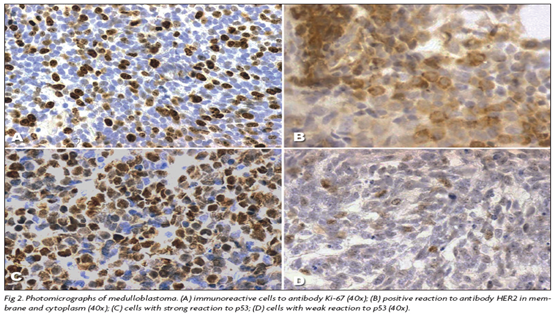
Fine Needle Cytology
Cytology is a branch of pathology that studies and diagnoses diseases on the cellular level. The discipline was founded by Rudolf Virchow in 1858. A common application of cytopathology is the Pap smear, used as a screening tool, to detect precancerous cervical lesions and prevent cervical cancer. Cytopathology is also commonly used to investigate thyroid lesions, diseases involving sterile body cavities (peritoneal, pleural, and cerebrospinal), and a wide range of other body sites. It is usually used to aid in the diagnosis of cancer, but also helps in the diagnosis of certain infectious diseases and other inflammatory conditions. Cytopathology is generally used on samples of free cells or tissue fragments, in contrast to histopathology, which studies whole tissues.
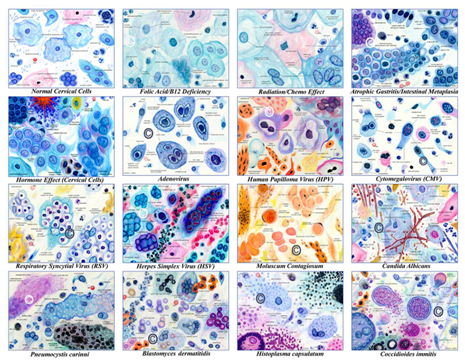
Cytopathologic tests are sometimes called smear tests because the samples may be smeared across a glass microscope slide for subsequent staining and microscopic examination. However, cytology samples may be prepared in other ways, including cytocentrifugation. Different types of smear tests may also be used for cancer diagnosis. In this sense, it is termed a cytologic smear.
Cytopathology is frequently, less precisely, called cytology, which means “the study of cells.”
Hematology
Hematology is the study of blood, the blood-forming organs, and blood diseases. Hematology includes the study of etiology, diagnosis, treatment, prognosis, and prevention of blood diseases that affect the production of blood and its components, such as blood cells, hemoglobin, blood proteins, and the mechanism of coagulation. The laboratory work that goes into the study of blood is frequently performed by a medical technologist. Hematologists also conduct studies in oncology—the medical treatment of cancer.
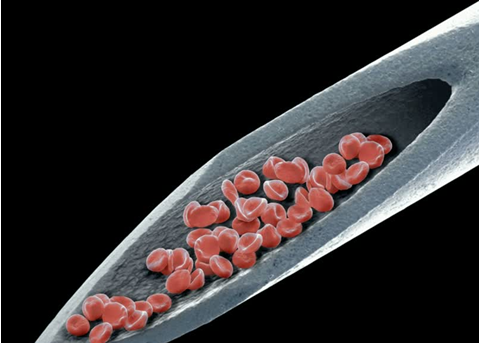
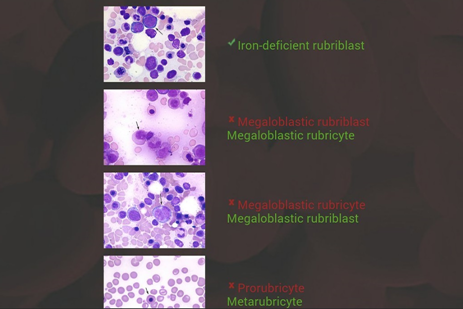
Physicians specialized in hematology are known as hematologists or haematologists. Their routine work mainly includes the care and treatment of patients with hematological diseases, although some may also work at the hematology laboratory viewing blood films and bone marrow slides under the microscope, interpreting various hematological test results and blood clotting test results. In some institutions, hematologists also manage the hematology laboratory. Physicians who work in hematology laboratories, and most commonly manage them, are pathologists specialized in the diagnosis of hematological diseases, referred to as hematopathologists.
Hematology is a distinct subspecialty of internal medicine, separate from but overlapping with the subspecialty of medical oncology. Hematologists may specialize further or have special interests, for example, in:
Treating bleeding disorders such as hemophilia and idiopathic thrombocytopenic purpura
Treating hematological malignacies such as lymphoma and leukemia
Treating hemoglobinopathies
In the science of blood transfusion and the work of a blood bank
In bone marrow and stem cell transplantation
Biochemistry
Biochemistry, sometimes called biological chemistry, is the study of chemical processes within and relating to living organisms. By controlling information flow through biochemical signaling and the flow of chemical energy through metabolism, biochemical processes give rise to the complexity of life. Over the last 40 years, biochemistry has become so successful at explaining living processes that now almost all areas of the life sciences from botany to medicine are engaged in biochemical research. Today, the main focus of pure biochemistry is in understanding how biological molecules give rise to the processes that occur within living cells, which in turn relates greatly to the study and understanding of whole organisms.


Biochemistry is closely related to molecular biology, the study of the molecular mechanisms by which genetic information encoded in DNA is able to result in the processes of life. Depending on the exact definition of the terms used, molecular biology can be thought of as a branch of biochemistry, or biochemistry as a tool with which to investigate and study molecular biology.
Much of biochemistry deals with the structures, functions and interactions of biological macromolecules, such as proteins, nucleic acids, carbohydrates and lipids, which provide the structure of cells and perform many of the functions associated with life. The chemistry of the cell also depends on the reactions of smaller molecules and ions. These can be inorganic, for example water and metal ions, or organic, for example the amino acids which are used to synthesize proteins. The mechanisms by which cells harness energy from their environment via chemical reactions are known as metabolism. The findings of biochemistry are applied primarily in medicine, nutrition, and agriculture. In medicine, biochemists investigate the causes and cures of disease.
Microbiology
Microbiology is the study of microscopicorganisms, either unicellular (single cell), multicellular (cell colony), or acellular (lacking cells).Microbiology encompasses numerous sub-disciplines including virology, mycology, parasitology, and bacteriology.
Eukaryotic microorganisms possess membrane-bound cell organelles and include fungi and protists, whereas prokaryotic organisms—which all are microorganisms—are conventionally classified as lacking membrane-bound organelles and include eubacteria and archaebacteria. Microbiologists traditionally relied on culture, staining, and microscopy. However, less than 1% of the microorganisms present in common environments can be cultured in isolation using current means. Microbiologists often rely on extraction or detection of nucleic acid, either DNA or RNA sequences.

Viruses have been variably classified as organisms,as they have been considered either as very simple microorganisms or very complex molecules. Prions, never considered microorganisms, have been investigated by virologists, however, as the clinical effects traced to them were originally presumed due to chronic viral infections, and virologists took search—discovering “infectious proteins”.
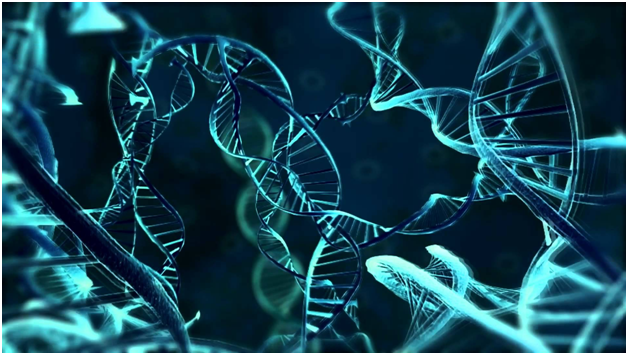
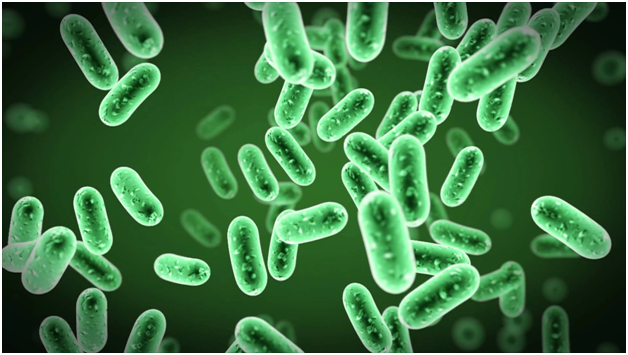
As an application of microbiology, medical microbiology is often introduced with medical principles of immunology as microbiology and immunology. Otherwise, microbiology, virology, and immunology as basic sciences have greatly exceeded the medical variants, applied sciences.
Histology
Histology, is the study of the microscopic anatomy of cells and tissues of plants and animals. It is commonly performed by examining cells and tissues by sectioning and staining, followed by examination under a light microscope or electron microscope. Histological studies may be conducted via tissue culture, where live cells can be isolated and maintained in a proper environment outside the body for various research projects. The ability to visualize or differentially identify microscopic structures is frequently enhanced through the use of histological stains. Histology is an essential tool of biology and medicine.

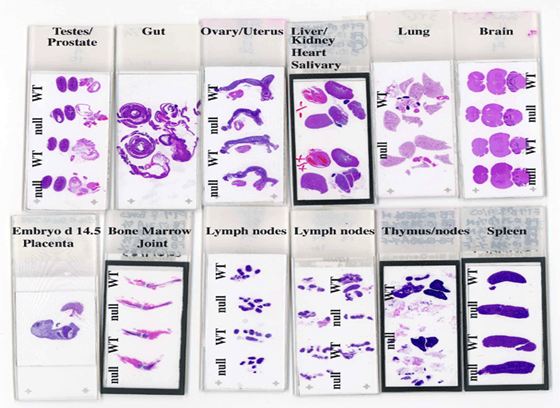
Histopathology, the microscopic study of diseased tissue, is an important tool in anatomical pathology, since accurate diagnosis of cancer and other diseases usually requires histopathological examination of samples. Trained physicians, frequently board-certified as pathologists, are the personnel who perform histopathological examination and provide diagnostic information based on their observations.
Satyakiran Healthcare 2017. Powered by Exact IT Solutions Pvt. Ltd.




